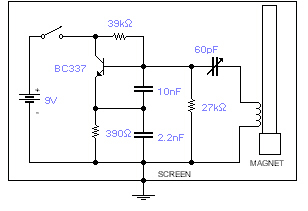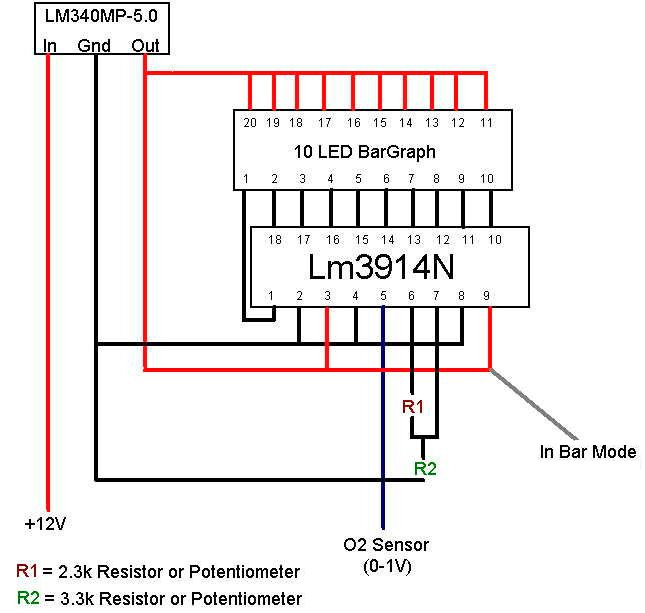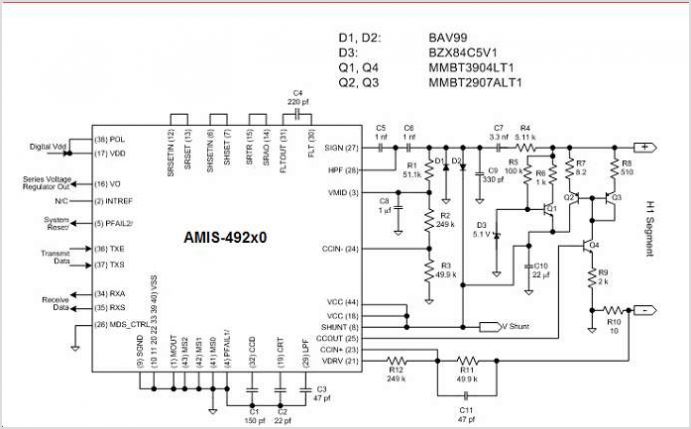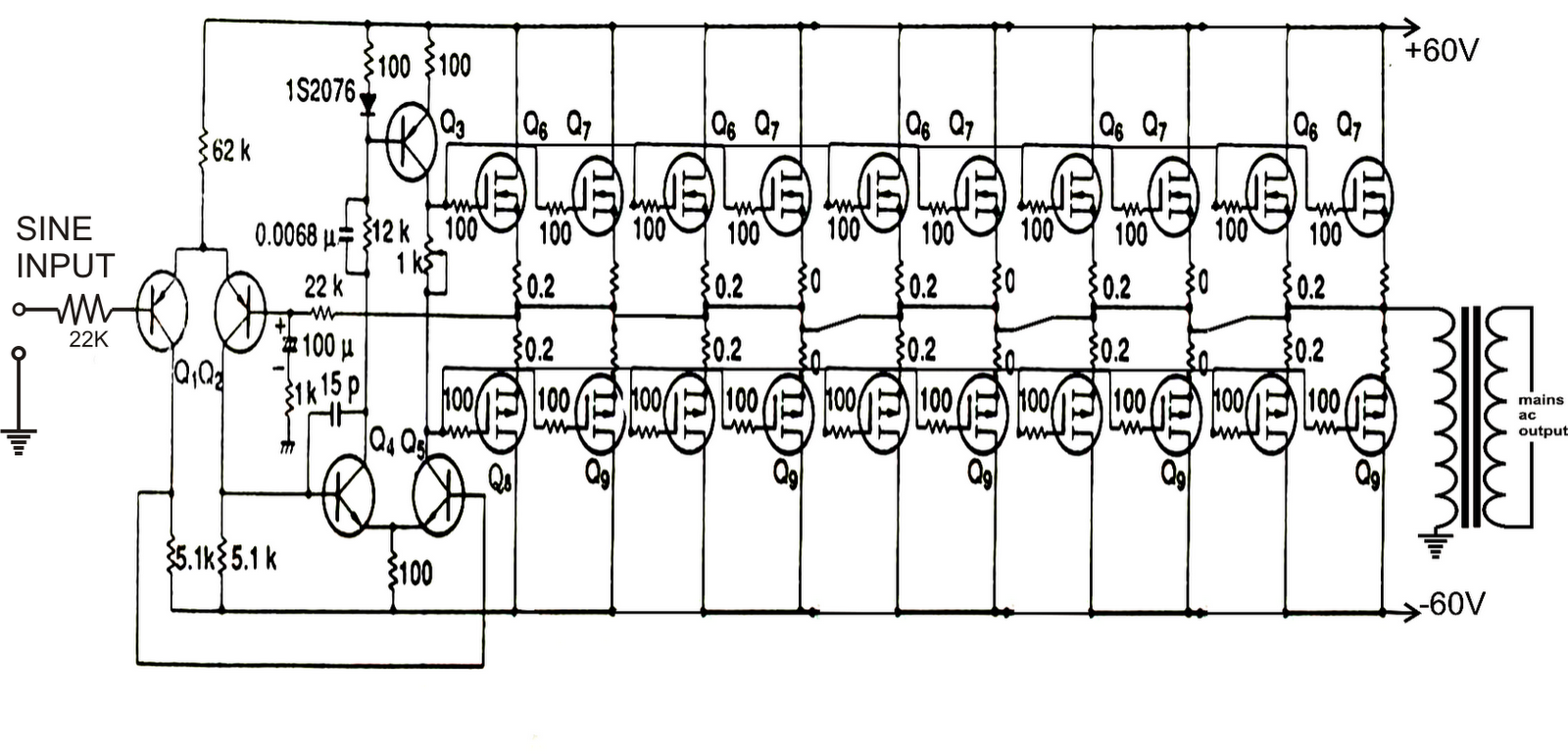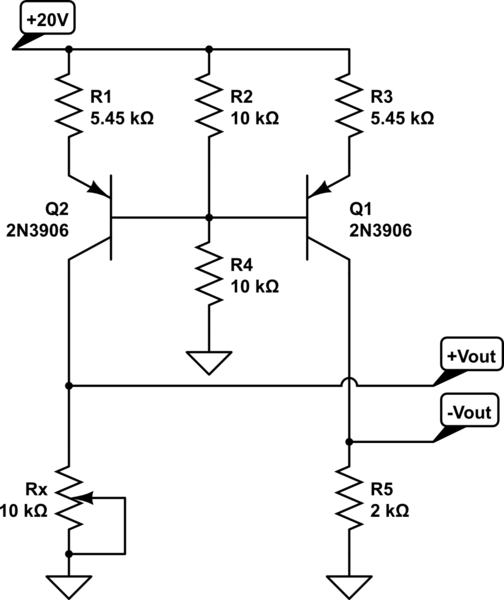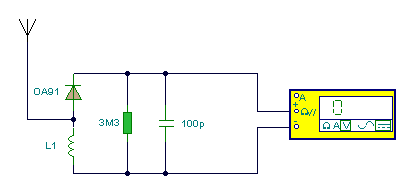
make electromagnetic field
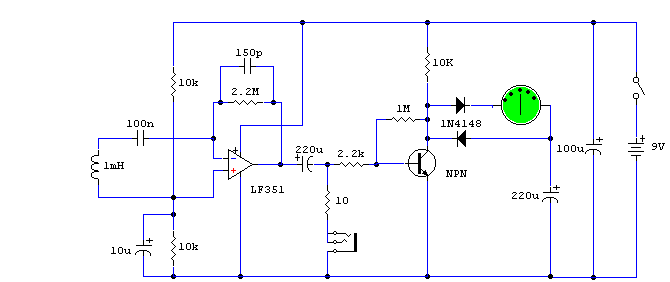
This circuit is a valuable tool that is easy to construct and more sensitive than many commercially available devices. It is based on an LF351 low-noise operational amplifier and a 1mF choke functioning as the sensor. Unlike most simple EMF detectors, this design features a meter output for precise readings. Additionally, users can estimate the frequency of the electromagnetic field by connecting headphones. The circuit can detect fields ranging from 50Hz to 100kHz, making it highly versatile and a beneficial addition to any hobbyist's workbench. This circuit is particularly useful for ghost hunters, as it has been noted that the presence of a ghost can disrupt EMF, allowing for the detection of such changes with this device.
The circuit utilizes the LF351 low-noise operational amplifier, which is known for its high input impedance and low offset voltage, making it ideal for sensitive applications such as electromagnetic field (EMF) detection. The 1mF choke serves as the sensing element, responding to variations in the electromagnetic field and converting these changes into an electrical signal that the operational amplifier can process.
The design incorporates a meter output, which provides a direct visual indication of the EMF strength, allowing for accurate measurements. This feature distinguishes it from simpler EMF detectors that may only provide an audible signal or a basic indicator. The inclusion of a headphone jack allows users to listen to the frequency of detected fields, offering an additional means of interaction with the device.
The frequency response of this circuit spans from 50Hz to 100kHz, which encompasses a wide range of electromagnetic fields, including those generated by electrical appliances, communication devices, and potentially paranormal phenomena. This broad detection range enhances its utility for various applications, whether for scientific exploration or hobbyist investigation.
Overall, this EMF detector circuit is a sophisticated, yet accessible project for electronics enthusiasts. Its sensitive design and dual output options make it a versatile tool that can cater to a wide range of interests, particularly in the fields of ghost hunting and electromagnetic field research.This circuit is a real gem! Easy to make and more sensitive than many commercial devices available. It`s based around an LF351 low-noise operational amplifier and a 1mF choke acting as the sensor. Unlike most other simple EMF detectors, this one has a meter output for accurate reading, but alternatively, you can also roughly estimate the frequency of the field by plugging in headphones. It can detect any field from 50Hz to 100kHz, making it highly versatile and a worthwhile addition to any hobbyist`s workbench. Are you a ghost hunter Then this is the circuit that you`ve been waiting for! Since it has been observed that appearance of a ghost tends to disturb the EMF, you can now detect any such changes with this little detector.
🔗 External reference
The circuit utilizes the LF351 low-noise operational amplifier, which is known for its high input impedance and low offset voltage, making it ideal for sensitive applications such as electromagnetic field (EMF) detection. The 1mF choke serves as the sensing element, responding to variations in the electromagnetic field and converting these changes into an electrical signal that the operational amplifier can process.
The design incorporates a meter output, which provides a direct visual indication of the EMF strength, allowing for accurate measurements. This feature distinguishes it from simpler EMF detectors that may only provide an audible signal or a basic indicator. The inclusion of a headphone jack allows users to listen to the frequency of detected fields, offering an additional means of interaction with the device.
The frequency response of this circuit spans from 50Hz to 100kHz, which encompasses a wide range of electromagnetic fields, including those generated by electrical appliances, communication devices, and potentially paranormal phenomena. This broad detection range enhances its utility for various applications, whether for scientific exploration or hobbyist investigation.
Overall, this EMF detector circuit is a sophisticated, yet accessible project for electronics enthusiasts. Its sensitive design and dual output options make it a versatile tool that can cater to a wide range of interests, particularly in the fields of ghost hunting and electromagnetic field research.This circuit is a real gem! Easy to make and more sensitive than many commercial devices available. It`s based around an LF351 low-noise operational amplifier and a 1mF choke acting as the sensor. Unlike most other simple EMF detectors, this one has a meter output for accurate reading, but alternatively, you can also roughly estimate the frequency of the field by plugging in headphones. It can detect any field from 50Hz to 100kHz, making it highly versatile and a worthwhile addition to any hobbyist`s workbench. Are you a ghost hunter Then this is the circuit that you`ve been waiting for! Since it has been observed that appearance of a ghost tends to disturb the EMF, you can now detect any such changes with this little detector.
🔗 External reference
